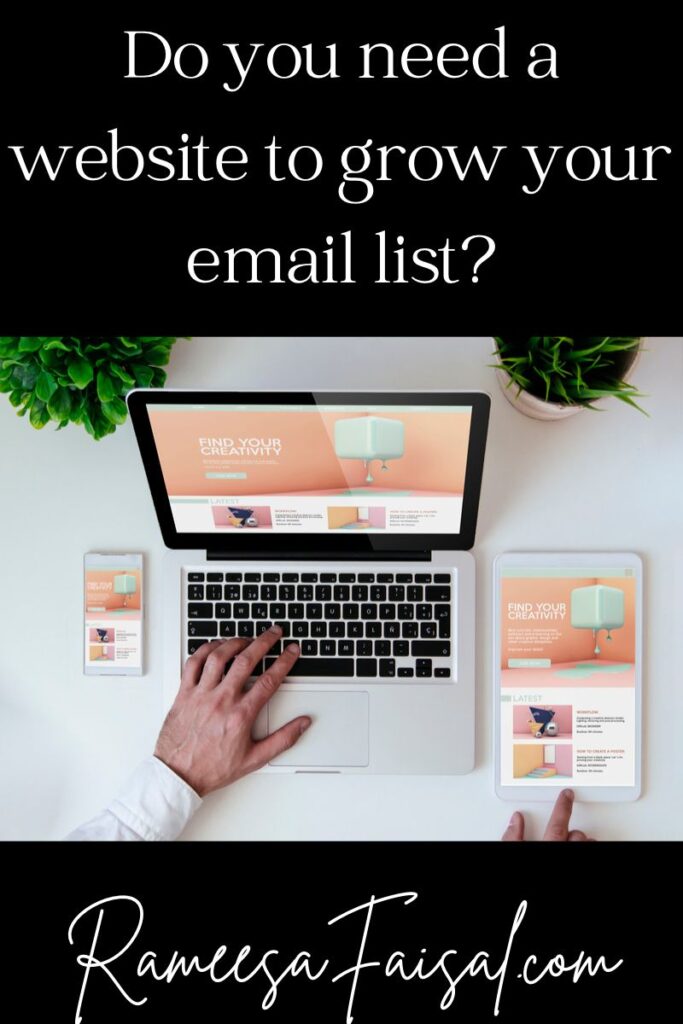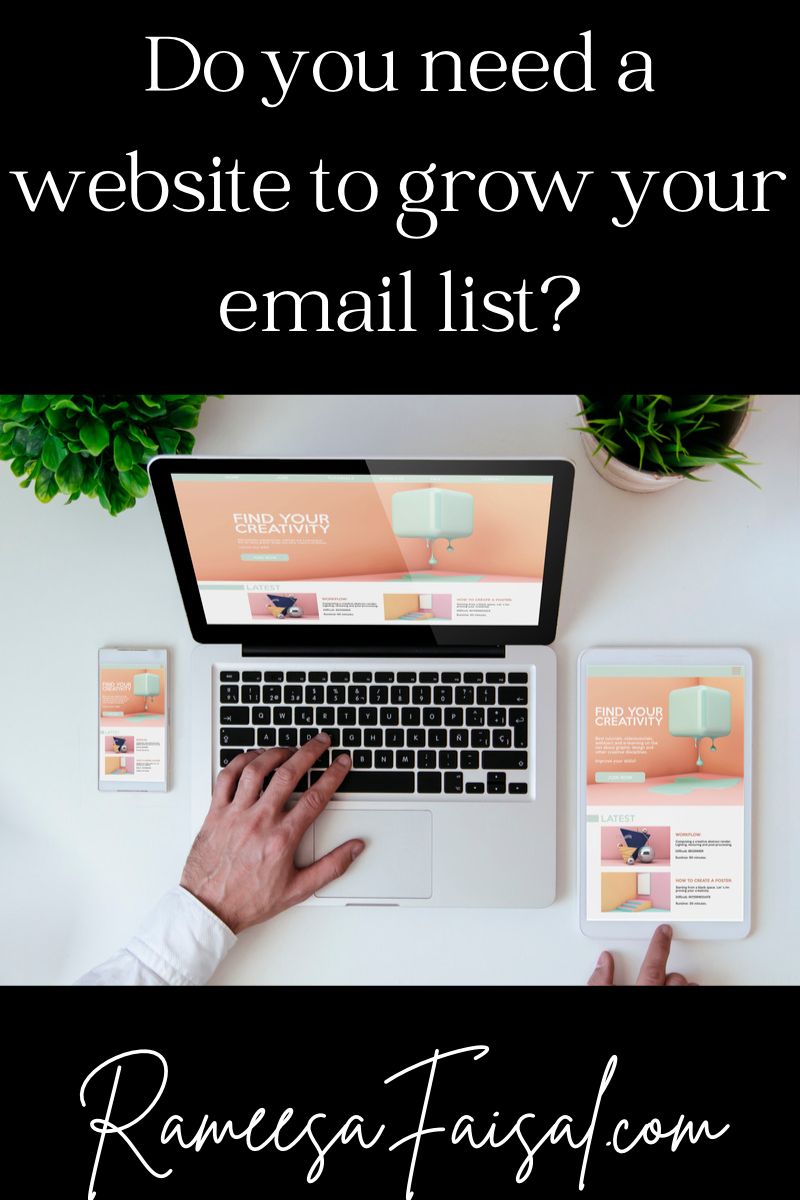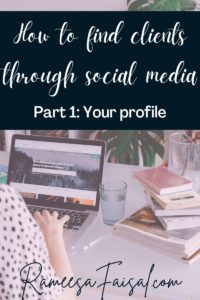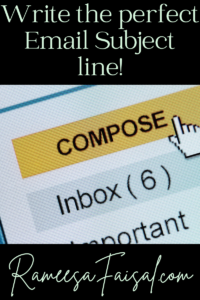
Ok, so I get this question, surprisingly, a lot… Can you build an email list even if you have no website? Is it even possible? Well, I’m here to answer that question for you today and you may even be surprised by what you read.
The short answer is, no, you don’t need a website to build an email list, however, there are some steps you need to take in order to build it effectively. Let’s get into that now.
Lead Magnets
First off, you may not need a website but you do need something to entice people to sign up to your email list. This is what we call a ‘lead magnet’. In layman’s terms, a lead magnet is that thing you came across on someone’s website or blog, that came free of cost, all you had to do was enter your email and that thing came straight to your inbox. It could be a free template, ebook, mini course, or just a newsletter subscription.
If you need help with this, I’ve created a free 5 day email marketing challenge that will help you create and grow your email list. Not only that but I’ve included a couple of extra freebies and gifts for you within the challenge to give you an extra little boost. If you’re looking to grow your email list in a short span of time, my tasks in the challenge should take you no more than 15 minutes a day for 5 days! If you’re interested, you can sign up below!
The form you have selected does not exist.
Platform
Next, you need to figure out what platform to host your lead magnet on. Many platforms have a free plan up to a specific number of subscribers (usually free until AT LEAST 1000 subscribers). I personally use Mailerlite. They have a free account for up to 1000 subscribers which is incredible for new list builders. There are a whole lot of other benefits to mailerlite that I won’t get into in this post, but InshAllah I’ll write a whole post about this down the line. You, however, can use any platform you’d like. There’s a whole world of email marketing softwares out there including Mailchimp, Sendinblue. ActiveCampaign, Hubspot, Omnisend, Mailjet, etc…
Landing Page
Next, you create your landing page. Every platform differs on their layouts and settings as far as their features are concerned but many use drag and drop features to make the process a little (or a LOT) easier. Some things that you should and shouldn’t include in your landing pages include:
- Do NOT include any outside links: This may lead the potential new subscriber away from your landing page and they could end up forgetting to sign up at all
- Do NOT talk (or write) too much. A landing page is just that, a LANDING PAGE. It is a 1 page website with the sole purpose of selling (or getting you to sign up) something. It’s not for you to tell your life story or the story of how you got started (unless it will help convince the reader to sign up). Get to the point of what you want them to sign up to. DO include everything that they will get once they sign up. If you want to write a blog post then you can either purchase your domain and site or, sign up to a free service such as blogger but don’t use your landing page as a full website.
- DO add testimonials of past users of your product or service so that the new subscriber knows that you’re giving them the best product (if you have them of course). If you don’t have any, then don’t fret. Once these subscribers use your product/service, you can conduct a survey asking about their experience and opinions and then you can use those on your landing page
Emails
Now that you’re done your landing page, you’re good to go, right? WRONG. Now you need to create the emails that you’re going to send out to your new subscribers. Now, there are a number of emails that need to be sent out and you would use your automation feature in your email marketing software to achieve this. Why? Well, the automation feature allows you to send out emails on a timed basis without forcing you to sit at your computer (or on your phone 24/7) and your new subscriber still feels like you just emailled them personally every single time!
A typical email nurture sequence includes between 5-7 emails and they include (but aren’t limited to):
- A welcome email: (This will include a link or attachment file of the freebie (lead magnet that you created in step one of this whole process). It will also welcome your new subscriber and will give them any additional info they may need in order to access the file
- Value-driven email: This email will give tips and tricks to your new subscriber that will be in line with their interests (this is where email segmentation comes into play). This email can be eductational, entertaining or thought provoking.
- Product/service overview: This one will go over how the company’s products/services can help the reader in their own lives and basically go over why the reader should buy from them above the competition (please note, this is not a ‘buy me buy me’ email. This email is just going over the benefits of buying from you in order to entice your reader to learn more about you.)
- Case Study/Testimonial: This email is quite self explanatory. You’ll show your reader that your product/service has been used by others and how much those other people are raving about you and your product/service. Again, not a sales email, just more proof of your awesomeness! (If you don’t have case studies/testimonials, then put out a beta tested product and let people use it (even for a limited time) for a lesser cost (or you can even offer it for free in exchange for the testimonials)
- Special offer/discount: Here’s where you start to ask for the sale. You’ve convinced them that your product/service is the best, now it’s time to bring them in with a special ‘one time’ offer that they can’t refuse!
- Re-engagement: This email will lure dormant subscribers back to you. This email will rekindle their interest in you and encourage them to take the next step in their buyer/subscriber journey
- Final CTA: This one will go out as your final call to action (CTA). It should include a strong, clear and concise action that you want your reader to take. This email should remind them why YOUR product/service is the best they can get.
These are some of the most common types of emails included in a nurture sequence, but the exact content and number of emails will vary depending on the specific goals and target audience of the campaign.
Lead Generation
Now, it’s time to get out there and find your people. You can use all types of channels to do so. My favourite way to do so (besides this little website that I like to call my home on the internet), is social media. I personally use Pinterest, Facebook, and occasionally LinkedIn.
Now, how do I use these tools to grow my own list? Well, as far as Facebook and Linkedin are concerned, I just post on my profile and/or groups (for Facebook) that I have a free ________ and anyone who’s interested, to comment below or dm me directly for the link. I then wait for the comments and we have a chat (in group comments or dms), I answer any questions they may have and then send them the link.
As far as Pinterest is concerned, after creating all of the above, I’ll go into Pinterest and create a new pin with my landing page web address and bring people in that way!
Now, I hope this has been of help to all those out there who may not want to invest in a website just yet or just want to figure out how to grow your email lists without a website.
And check out my last post about mistakes you COULD be making in your email marketing here!
And don’t forget to share, like, comment, subscribe.



